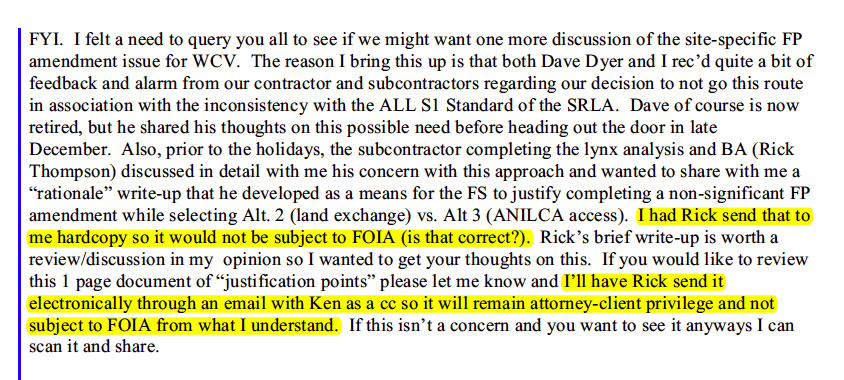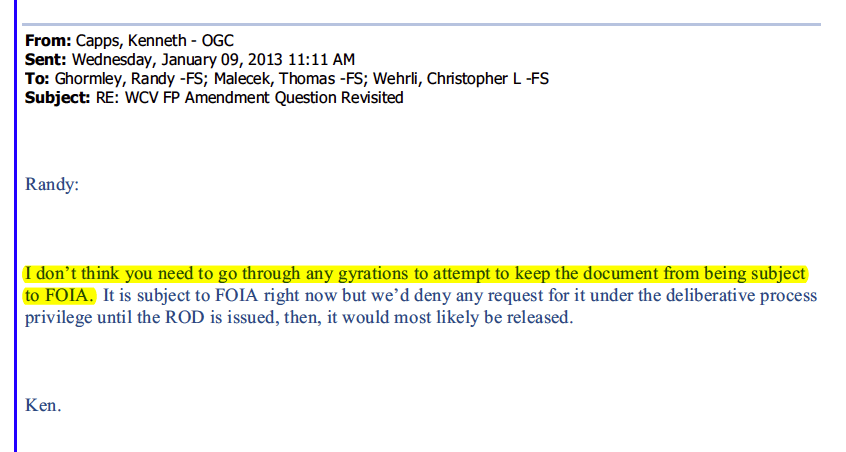This is part of our Wolf Creek Files blog series. Each post explains, in detail, the context behind an email or string of emails: who is writing, what is being discussed, and why it concerns us.
Click here to see previous exhibits.
WHO:
- Rick Thompson, Wildlife Biologist, Western Ecosystems, Inc.
Third party consultant to the Forest Service on threatened Canada Lynx migration corridor issues - Randy Ghormley, Wildlife Biologist, Rio Grande National Forest
Head biologist on the Forest Service Environmental Impact Statement (EIS) for the Wolf Creek development land exchange * - Ken Capps, Forest Planner, Rio Grande National Forest
Office of General Council attorney for the Forest Service, aided with the legal and nonlegal aspects of the EIS, played a key role in allowing undue influence that lead to the invalidation of the 2006 EIS
WHAT:
In these emails Forest Service employee, Randy Ghormley, is asking agency employees working on the EIS if they should hide the trail of records concerning their discussions with a third party consultant about lynx issues. ** Their internal legal counsel, Ken Capps, advises that they don’t “need to go through any gyrations to attempt to keep the document from being subject to FOIA.” *** See the full email chain here.
WHY:
While the Forest Service employees in these emails ultimately decide not to conceal electronic records of the lynx investigation, these emails show a practice of identifying potentially incriminating records and concealing them from Freedom of Information Act (FOIA) requests through (1) printing hardcopies, and (2) misusing attorney-client privilege.

When a FOIA is filed the agency is allowed to “blackout” any sensitive legal sections to protect the employees. But, as these employees reveal the deceptive practice of just cc’ing an attorney (in this case Ken Capps) to exploit the attorney-client privilege. This well-known practice delays release by months and even years, requiring the public to file appeals and lawsuits to remedy this widely used practice.
Many of the documents we’ve received through FOIA and our legal case have large sections, even whole email chains, blacked-out due to attorney-client privilege, it’s hard to sort out what was truly concealed on legal grounds, and what was wrongly concealed through misuse of this privilege. Thousands of pages previously withheld have now been released, but it took litigation to gain access.
These active efforts to hide information from the public are unacceptable. Transparency is essential for a functional democracy.




